A 12-year-old boy died at a wilderness therapy program. He's not the first.
North Carolina health officials said Friday that they are removing all children from the care of a wilderness therapy program, Trails Carolina, nearly two weeks after the death of a 12-year-old New York boy.
The boy was transported by two men from New York to Trails Carolina on Feb. 2. The next morning, emergency workers responded to a 911 call reporting that the boy was not breathing. His cause of death is still pending.
In an affidavit filed with a search warrant, Detective Andrew Patterson stated that when investigators arrived on Feb. 3, the boy was cold to the touch and his body was in rigor mortis. A CPR mask covered the boy’s face and detectives noted possible bruising around his eye, Patterson stated.
In 2022, USA TODAY published this detailed investigation into the long-term impact of wilderness therapy programs, including a look at Trails Carolina specifically.
In brochures and online, these programs can look idyllic, touting an opportunity for children struggling with a myriad of behavioral issues to "connect with nature" and "find hope and healing."
But former campers who spoke with USA TODAY paint a different picture. They tell of being abused by staff, of fearing punishment at all hours. They describe living in filth.
They call themselves survivors.
One former staffer we spoke to at Trails Carolina detailed why he thought his training as well as the treatment teens received at the program was entirely insufficient.
Here’s the whole story:

The bathroom consisted of a tarp tied between two trees.
When Katelyn Haruko Schmisseur used it, she made eye contact with a staff member. She squatted, they stared. A requirement of her wilderness therapy program, they told her.
Because of her eating disorder, a staff member was with her at all times almost the entire length of her stay in the Utah desert.
A bucket lined with a biohazard bag acted as a receptacle for solid waste. As the weather got warmer, the smell got stronger. The flies were incessant.
With only one roll of toilet paper a week to be split among 10 people, Katelyn would resort to cleaning herself with sticks and leaves.
"It was just so nasty," she says. "They didn't care. ... (It was) just another form of dehumanizing you and taking away your dignity."
She was 16 when she first arrived with only a few items, all stuffed into a 40-pound backpack.
The first activity? A grueling 3-mile hike.
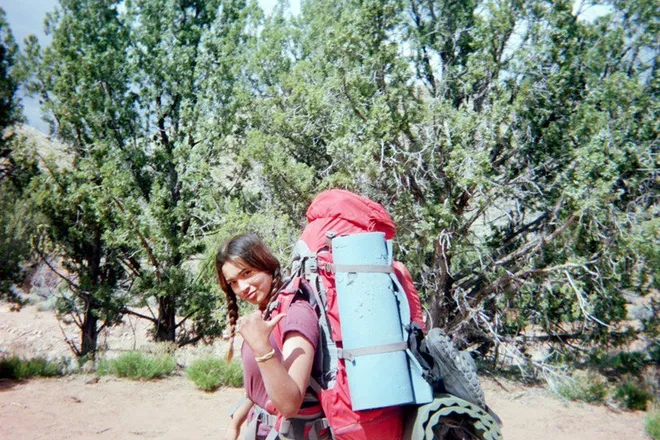
"I was terrified," says Katelyn, now in her 20s."I missed my family more than anything. I just remember feeling so helpless. It's like you're living in this existence, but you don't have free will, you don't have autonomy, and they make that very clear to you. They make it very clear to you that you are a patient. You have no freedom. You have no choice."
Katelyn is one of many former campers coming forward to share their experiences with wilderness therapy, a type of treatment parents often turn to when they feel they need professional help for their kids and counseling isn't enough.
In recent years, the "troubled teen industry," which includes reform schools and residential treatment facilities, has come under scrutiny as former students speak out about the alleged mistreatment they experienced. (One big name who has elevated the cause is Paris Hilton.) But as the industry overall inches toward reform, wilderness therapy tends to fly under the radar.
That's because it's often billed as a shorter-term solution to problems (the typical wilderness program runs about 90 days), and there's also a lack of federal oversight into these private programs, experts say. In brochures and online, these programs look idyllic, touting an opportunity for children struggling with a myriad of behavioral issues to "connect with nature" and "find hope and healing."
But former campers who spoke with USA TODAY paint a different picture. They tell of being abused by staff, of fearing punishment at all hours. They describe living in filth.
They call themselves survivors.
And, perhaps most telling, they say wilderness therapy served as the gateway to separate, longer-term residential treatment centers. Of the dozen former campers USA TODAY spoke to, nine were sent for further treatment. None say wilderness therapy helped them with their struggles. All described their experience as negative and traumatizing.
Despite accusations of abuse and experts in the field denouncing this type of treatment, some remain staunch proponents of wilderness therapy, saying it worked for their families. And even with past lawsuits and viral horror stories, wilderness therapy is still a booming industry in the U.S. today.
Despite allegations, deaths wilderness therapy lives on
Wilderness therapy has existed in some form for more than half a century, gaining steam in the ‘90s with programs promising the healing power of nature could cure any problems parents faced with their kids. The pandemic gave it an extra bump.
"Business was booming for them (during COVID-19)," says Jonathan Hyde, a former staffer who took a job at North Carolina-based wilderness program Trails Carolina in 2020. "People were at their wits' end at home, and their kids (were) acting up, so they (sent them) off."
In the United States, there are about 40 wilderness therapy programs – part of 2,000 overall "troubled teen" programs, with anywhere from 150,000 to 200,000 children now enrolled, says Bobby Cook, executive director and chief operational officer of Breaking Code Silence, a nonprofit that advocates against the troubled teen industry. The approaches of these programs vary, as do the reasons that parents send their teens to them.
USA TODAY reached out to wilderness therapy programs and their proponents, who defended their practices as enriching and beneficial to participants. Trails Carolina, for example, says it fully trains its staff, involves parents in the process and develops individual treatment plans for each student. Many claim those who completed the therapy fully recovered from disorders such as depression and anxiety.
But critics point to the number of allegations and deaths at wilderness therapy camps as a clear sign that parents, legislators and the media need to be looking more closely at these institutions.
Among the fatalities: In 1990, 16-year-old Kristen Chase died of heatstroke three days after arriving at her wilderness program. In 2000, 15-year-old William Edward Lee died from a head injury after being restrained by staff; 14-year-old Ian August died of hyperthermia at his wilderness therapy program two years later. The same year, Charles Moody, 17, died of asphyxiation after being restrained. In 2005, Anthony Haynes, 14, died while being punished at a wilderness boot camp. In 2007, Caleb Jensen, 15, died while at a wilderness camp, his body found bundled in a feces- and urine-soaked sleeping bag. In 2011, Daniel Huerta, 17, died while being driven by a staff member. In 2016, 19-year-old Lane Lesko died during an escape attempt at a hybrid wilderness-residential treatment center.
‘I was so desperate’
Most parents don't send their kids off to wilderness therapy at the first sign of a problem. Rather, kids wind up there after their parents feel they've exhausted all other options.
Katelyn's mother, Tessie Schmisseur, learned about wilderness therapy through a friend-recommended educational consultant, whom she describes as a "very demanding, pushy ... high-pressure salesperson."
"I was just an anxious mom. I loved (Katelyn) to death," she says. "I was so desperate and desperately wanting to save my child from herself."
Katelyn had begun drinking and sneaking out, and that coupled with her bulimia had her parents panicked. They'd tried every punishment they could think of, including removing her door and boarding up her windows.
The final option? A wilderness therapy program called Evoke Entrada that the consultant highly recommended.
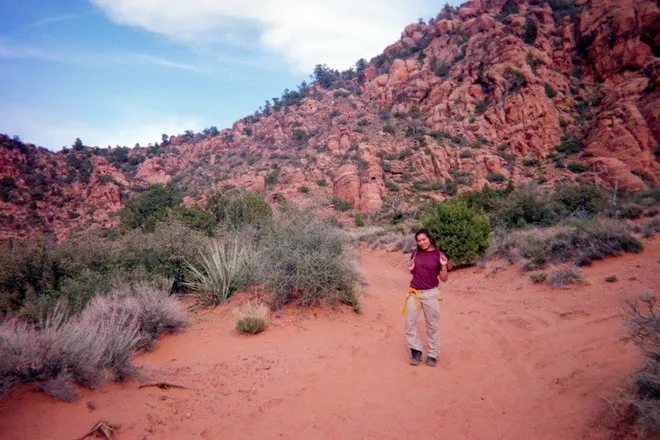
Tessie was resistant. The consultant often rubbed her the wrong way, but she convinced the Schmisseurs the program was for the best. And in three days, Katelyn was shipped off to Utah, clueless about where she was going.
"We had to pretend that everything was OK," Tessie says, choking up. "The education consultant all along was like, 'It's fine, I've worked with (the program before). You need to listen to me' ... And so we did. We did what we were told because we wanted the best for her. And in hindsight, it was the very wrong decision."
Hyde, the former staffer from a different program, says he remembers a 16-year-old girl who was at the top of her class and even held a manager position at her job. "The mom had died and the dad sent her away, because he found out that she (had become sexually active)," he recalls.
"The kid got sent away as this form of punishment. ... That's not therapeutic, right? You can't help people out while you're punishing them."
A spokesperson for Evoke said the program's goal is to help both children and parents."My experience is that the mass majority of everybody is having wonderful experiences," the spokesperson said, "but those who have wonderful experiences and speak out about it get bullied and shut down.”
‘I could barely move’
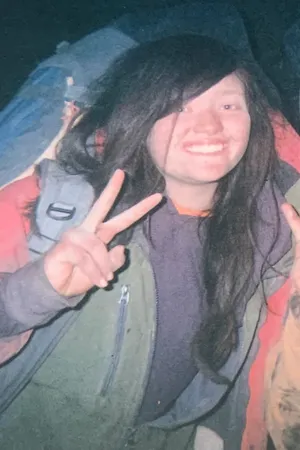
Kyra Frankowski says she saw no shortage of punishments during her stay at Second Nature Wilderness, where she was sent when she was 14.
With a plastic tarp for shelter, Kyra and her fellow campers battled freezing temperatures in Utah in January 2014, layering their few items of clothing to keep warm.
Because there was often snow, the ground stayed wet. It once took them six hours to make a fire.
This was one of several "consequences," or punishments, campers experienced if someone disobeyed a rule, she says. Unnecessary physical exertion was another, such as pack drills, where they were given under a minute to unpack and repack their bags. And it had to be done correctly, with the proper organization, or it would be repeated until it could be done within the time limit.
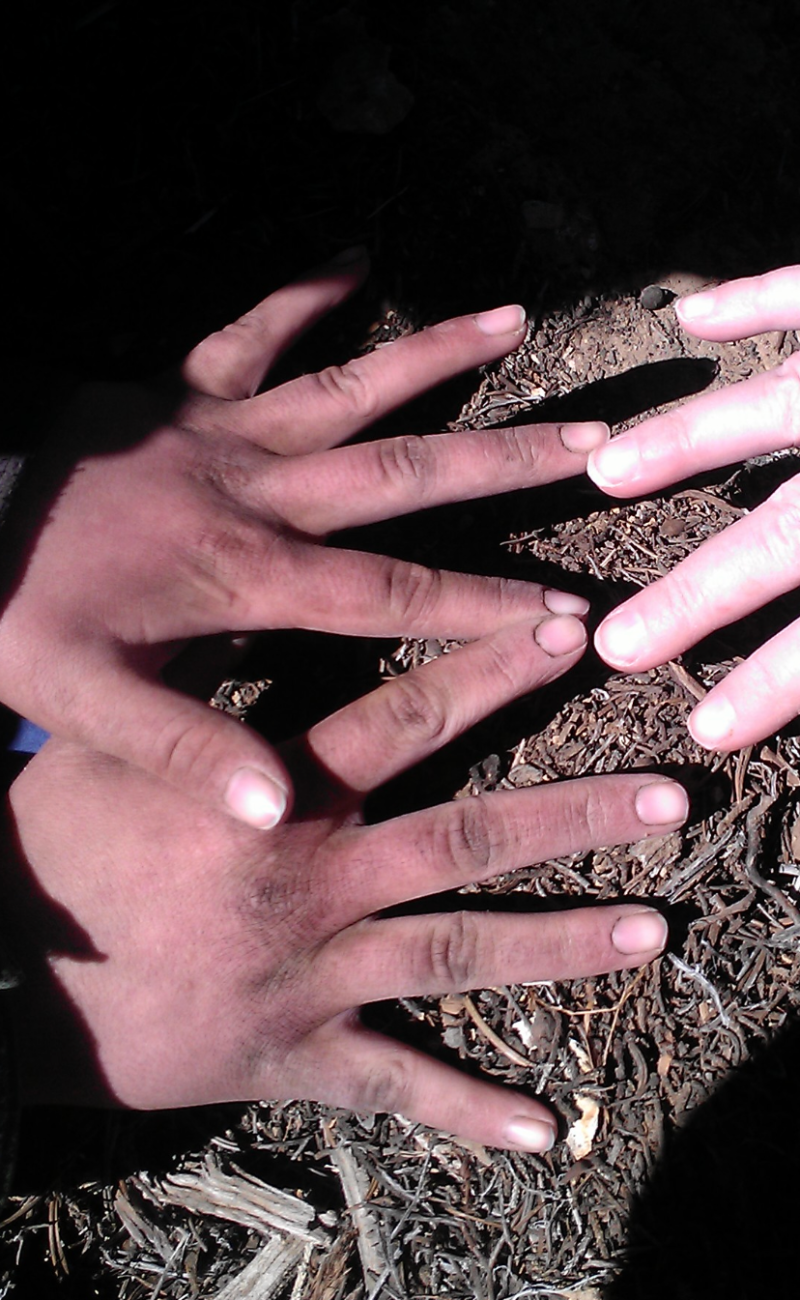
One night, her shoes were taken from her and she was forcibly wrapped in her tarp, she says. A staff member held down one side to prevent her from escaping, leaving an opening near her head to allow her to breathe. She says she stayed like that all night, unable to move.
As a sexual assault survivor, Kyra was particularly distressed that a male staffer was sleeping next to her, holding her in place. "They'd wrap it so tight I could barely move my hands."
Second Nature did not respond to USA TODAY's multiple requests for comment about Kyra's allegations.
Every other week, Kyra and her peers would take makeshift sponge baths, dipping a bandana into a bucket of water and dabbing it with a bit of soap.
"At the end you would just rinse yourself off with whatever water was left over. It was very difficult to get properly cleaned."
During the coldest months, she says, campers would forgo these baths altogether in favor of staying warm.
"We were very dirty."
‘I would not wish this on anybody’
Tessie cried every day while her daughter was away, but Katelyn never knew.
"They would tell us ... 'You may not tell her that you love her. You may not tell her that you miss her; you may not give her any hope of coming home." And, Tessie says, the staff would dismiss and discredit anything negative about the program that was conveyed in Katelyn's letters, telling her family: "She is going to say whatever (it takes) because, of course, she wants to come home."
But the conditions, as they learned later, "were horrible."
"We weren't aware of all this," Tessie says through tears. "I would not wish this on anybody, knowing what I know now. I always tell her she's the most courageous person I know."
Katelyn feared retaliation if she spoke freely about what she was witnessing.
"You couldn't complain. It really broke me down to the smallest I've ever been in my life. It was terrifying. ... I remember just feeling like I had no voice. I had nothing."
A spokesperson for Evoke said students' letters are not monitored, but parents may send letters to the therapist for feedback.
Evoke is committed to the "emotional and physical safety" of participants, the spokesperson said, adding the program encourages anyone with complaints of abuse or mistreatment to report their concerns. "We support healing and growth and that can only happen in the context of emotional safety."
The spokesperson added, "Anybody who experiences abuse from any program should have their voice heard. Any program that practices punitive, shameful, controlling, coercive, intimidating behavior should be reprimanded, if not shut down."
‘I didn’t feel prepared’
A nature enthusiast, Hyde, 35, had years of experience with recreational outdoor activities. So when the pandemic left him unemployed, he got a job as a "wilderness field instructor" at Trails Carolina.
He was familiar with the reputation of the wilderness therapy industry. In 2014, 17-year-old Alec Lansing died while running away from the same program. But Hyde assumed the claims of mistreatment he had heard whispers about had improved.
He says now that notion was wrong.
According to its website, the program's groups are led by "experienced, licensed therapists who specialize in working with youth who fit their group’s profile."
"There was a couple of weeks there where the licensed therapist wouldn't even show up to that group, and it was her assistant who didn't even have credentials," he says. "If you're paying that much money, I would think you'd be getting therapy multiple times a week."
When reached for comment, Trails Carolina said primary therapists are on site "two to three days per week" to oversee each participant's individualized treatment plan and monitor progress.
"Therapeutic progress occurs seven days a week in the field through the assignments, activities and challenges outlined in each student’s treatment plan to help them grow emotionally and develop transferable skills that can be used outside the program in real life," Trails Carolina said in an emailed statement.
While students also participated in activities like art or yoga once a week, Hyde doesn't believe most campers got the professional help they needed.
"Whenever the therapist did come in, it was pretty rare that they actually would talk to us – the people that had been with the kids for this lengthy amount of time – just to see how the week had (gone)."
The remainder of the 24/7 schedule was spent with field instructors like himself, who he felt were ill-equipped to handle the level of care some of the campers needed.
"Some of these kids are trying to kill themselves. I didn't feel really prepared for exactly what I was getting into."
That was in part, he says, because what was supposed to be a five-day training was cut in half and mostly focused on what type of gear they were allowed to bring, what tools and restraints they would have at their disposal. Hyde says he was let go when he pushed back on some of the program's practices.
Trails Carolina says its staff partakes in a long list of training, including sessions in first aid, nutrition, suicide prevention and crisis de-escalation. The program denied Hyde's version of events and said he was dismissed for violating the program's policies and philosophies.
Cook, of the nonprofit Breaking Code Silence, says there's often a disconnect between what programs promise and what they deliver in almost every area, from credentials to care.
"A lot of programs, not all of them but a lot, have had experiences where the staff of the schools are not certified to be doing what they're doing," Cook says. "There are therapists who weren't necessarily qualified in that area to be working in that realm."
As a mom, Tessie trusted the nearly $60,000, three-month Evoke Entrada program would have top-notch staffing.
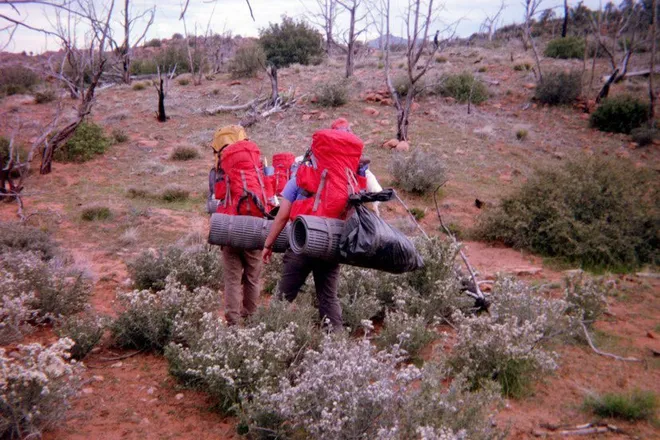
"They're going to take care of her, the counselors are there, don't worry about it," she remembers telling herself. "But it really appeared that they were young adults watching over them that weren't really equipped or specialized. Just older kids watching over younger kids."
The program wielded more power over Tessie and her family than she expected.
"They just made it seem like (she was) such a rotten kid and that she couldn't come home after the wilderness program," she says, instead suggesting Katelyn go to an aftercare program.
In her heart, Tessie felt it was time for Katelyn to come home, but the smiling photos she received of Katelyn at camp helped convince her that everything was fine.
Plus, after spending so much money on the program, she wanted to believe in it. Tessie's parents loaned her $20,000 to cover the cost of Katelyn's aftercare after the wilderness program had put a strain on them financially.
"It's just misleading to parents," she says.
‘Just trying to survive’
During the intake process, staff stripped Katelyn of all her clothes, jewelry and electronics.
In return, she was given three pairs of underwear, one T-shirt, a pair of cargo pants, socks, shoes and a sleeping bag – nothing that would help her keep track of time.
She understood this to be an intentional strategy to "strip us of our autonomy."
Kyra's program also kept her in the dark about timelines and release dates.
"They don't tell you even around when you might be leaving because that's 'future tripping.' 'You're getting lost in future thought,'" she recalls being told. Instead, she was told to stay focused on the present, which was "very difficult" given the circumstances.
"I felt like I was stripped down to my most vulnerable point," she says. "That's what they would say was the point. They were trying to 'break us down so they could build us back up.'"
The breaking down she felt – but not the building up.
"We were just at our most raw, vulnerable state, just trying to survive."
Hyde remembers a student who "basically snapped" after finding out, instead of getting out and going back home, his family was sending him to a therapeutic boarding school.
"He fought so hard that he went unconscious and was limp in my arms," Hyde recalls. "The thought that I had a dead child in my arms – that was terrifying."Hyde says the teen eventually recovered. Trails Carolina said the program has no record of a participant falling unconscious in the field.
Why critics say wilderness therapy fails
It's true, nature can be healing. And a nontraditional therapy route can be beneficial for some people. There are people who say wilderness therapy saved their lives, and some parents insist it stopped their children from going down a destructive path.
Michael Gass, a professor in the Outdoor Education Program at the University of New Hampshire and director of the Outdoor Behavioral Healthcare Center, say his years of research led to positive findings, showing wilderness therapy to be safe and effective.
But critics have lambasted his findings as it has ties to the leaders of some of these institutions. (In 2018, Gass co-wrote a study with Steven DeMille, the executive director of a Utah-based wilderness program at the time.) Gass also acknowledged no randomized controlled trials have proved the efficacy of wilderness therapy.
Others argue even if wilderness therapy is effectual for some, its premise is flawed.
"If a child is yanked out of his or her home, taken to somewhere that they are highly resistant to – we're now adding the element of additional trauma," says Carla Marie Manly, a clinical psychologist and author of "Joy from Fear."
When it comes to trauma-informed care, it's critical that participants have both consent and bodily autonomy, said Andrew Kerbs, who holds a master's degree in clinical mental health counseling. But during his time as a clinical intern at Trails Carolina, he saw neither.
"Those are two things that are completely robbed of the kids that are being sent to these programs," said Kerbs, who worked for the program in 2016.
He doesn’t believe using a punishment-based model is helpful, either.
“Whether that's the intention or not is besides the point. Intentions are important, but impact is still the most important … and a lot of kids are coming out of these feeling like it was a punishment. They didn't have a choice.”
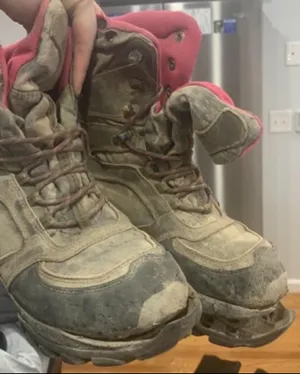
Programs may take in kids dealing with a laundry list of challenges, from rebellious behavior and video game addictions to eating disorders and violent tendencies. And then, Cook says some programs may often attempt to resolve issues in group therapy that may rely on tactics like "attack therapy," in which one child is singled out to discuss their struggle. Experts agree this approach is not the preferred solution.
If programs pathologize some teen behaviors, parents are often frightened, leaving them to feel as if sending their kid away is their only option. This messaging may be underscored by consultants recommending the programs.
"Instead of saying to a parent, 'Your kid is starting to have sex, and I know that's scary, but here's what we can do to better support them.' They're saying, 'Oh my God, they're gonna end up as a prostitute. You better send them away so they don't end up pole dancing,'" says Meg Appelgate, co-founder and CEO of the prevention organization Unsilenced, who also holds a degree in psychology.
It's normal for preteens and teenagers to push limits as they establish their identity.
"They're testing out what it feels like to be independent, what it feels like to make your own decisions," she says. "During these times you're going to see kids sneaking out, breaking the rules ... going against authority."
She urges parents to understand the implications of labeling their child as "troubled" or "a problem."
A survivor of the troubled teen industry herself, she cautions, "It really follows you throughout your life."
The lasting impact of wilderness therapy
Appelgate still lives with the effects of the treatment program she attended at 15. She wakes up to panic attacks because she was abducted in the middle of the night to be transported to her program. She eats quickly because otherwise she wouldn't have a chance to get more food.
"It becomes habit," she says. "These little things that they think aren't affecting kids are highly affecting them."
Through Appelgate's work, she has seen wilderness therapy survivors suffering with a variety of mental health challenges, from post-traumatic stress disorder to anxiety and depression.
After being cut off from the world, it can be difficult to reintegrate into society. Relationships can suffer, including between a parent and child. A strong distrust in authority figures can form.
"Trauma, even though it may be one incident, can certainly cause pervasive long-lasting damage in many areas of life that may seem wholly unrelated to the causal incident," Manly says.
Appelgate sees trauma coming from two main sources, from the experience itself and from being sent away and forced to live without a support system.
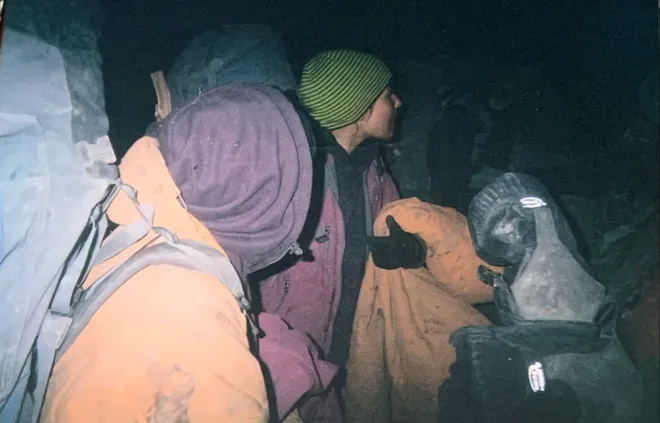
"Some people legitimately may have a good experience. I think that for 99% (of people), that's not the case," Appelgate says.
This is because the same event can be perceived differently depending on the person. One child may experience something as traumatic while another doesn't, Manly explains.
Research shows stress affects the nervous system and can even cause structural changes in the brain, which can change how we think and alter our memory. Stress can also weaken our immune system and exacerbate preexisting health conditions like cardiovascular disease or respiratory problems.
"The earlier (in life) the trauma, typically the more impactful it's going to be and the longer lasting impact we're going to see from that trauma," says Whitney Goodman, licensed psychotherapist and author of "Toxic Positivity."
- Chronic stress:Your body is trying to tell you something
‘What happened ... shaped my entire personality’
Programs do a "really good job of explaining things away to parents," Appelgate says, whether it's a negative review (look at the positive ones, too!), an active investigation or even a death.
They do this by telling parents they've changed policies so a certain incident "won't happen again," blaming it on staffers whom they've since fired or changing the name of a program to escape bad PR. Katelyn's program, for example, used to be named Second Nature Entrada but went through a rebrand in 2015 after years of abuse allegations.
Plus, experts question whether improvement in a child based on forced change equates to actual improvement.
"You can create compliance through punitive measures, but that's not equipping somebody with the resources to show up in the world as an autonomous adult," Kerbs says.
With more than 75,000 pieces of information on more than 3,500 programs (both shuttered and operating), Unsilenced says its searchable program archive is helping to force transparency by making info easily available for both parents and survivors.
But there's an urgent need for federal oversight, advocates say.
Looking back on their experiences, Kyra and Katelyn's voices have strengthened, aided by the community of survivors they've bonded with online. TikTok has served as an informal support group, with the hashtag #wildernesstherapy garnering millions of views.
But for Kyra, the anxiety and depression she entered camp with never improved. On top of that, she was diagnosed with PTSD and her relationship with her parents disintegrated.
"I just didn't trust them," she says. "I didn't want to tell them anything I was struggling with."

Katelyn remembers thinking that once she was back home, things were going to get better and "everything was going to be perfect."
It wasn't.
Wilderness didn't help her eating disorder. After being released from both her programs, she had the hardest relapse she'd ever had.
Now living in Orange Country, California, a senior in college, she has come a long way. But her past still stares her down.
"What happened to me there has shaped my entire personality," she says. She has still struggled with bulimia in the years since her release, and she now suffers from PTSD and manic depression.
"If anything, I’m so much worse off after these programs. They ruined my life."
Disclaimer: The copyright of this article belongs to the original author. Reposting this article is solely for the purpose of information dissemination and does not constitute any investment advice. If there is any infringement, please contact us immediately. We will make corrections or deletions as necessary. Thank you.







